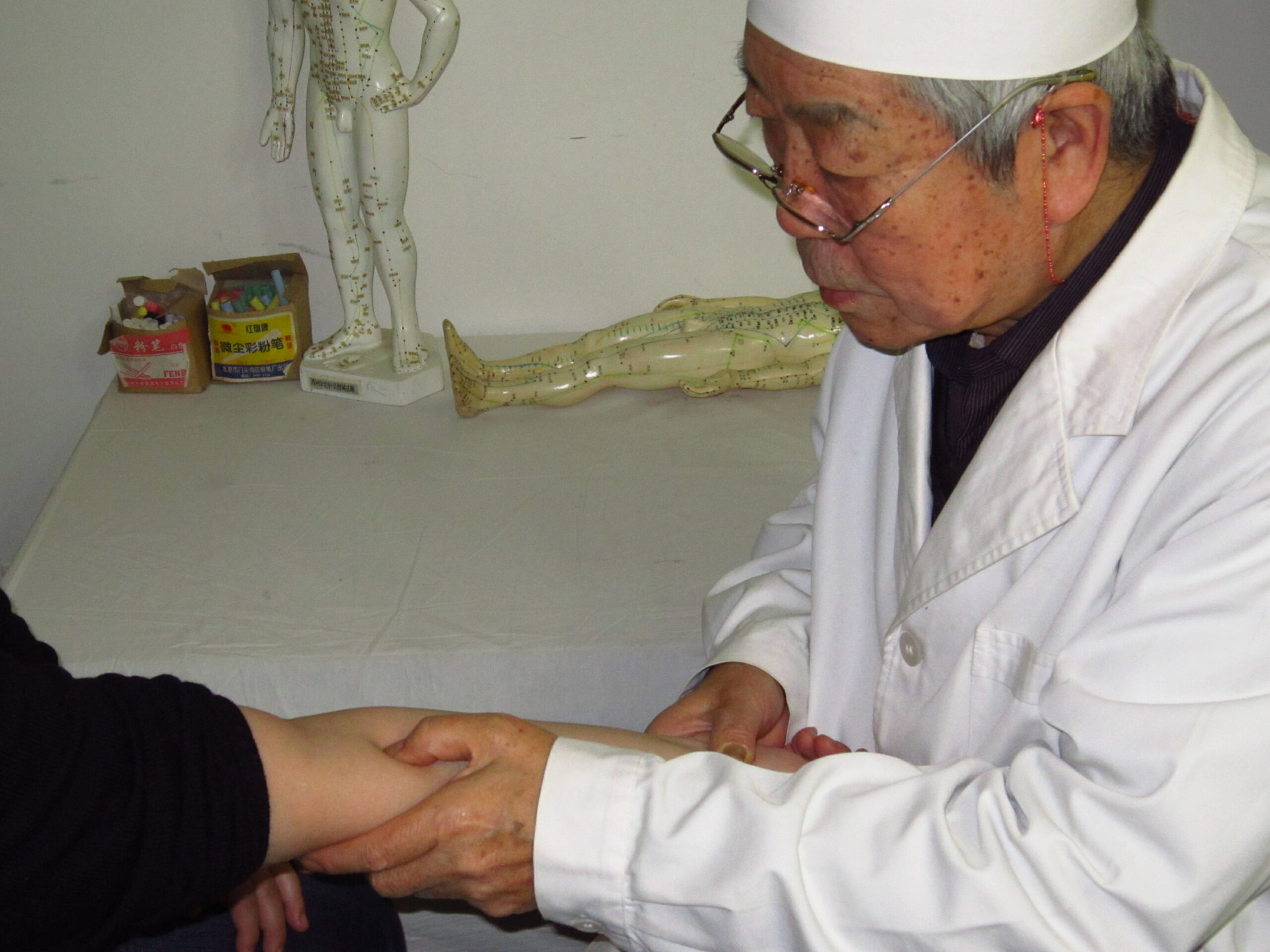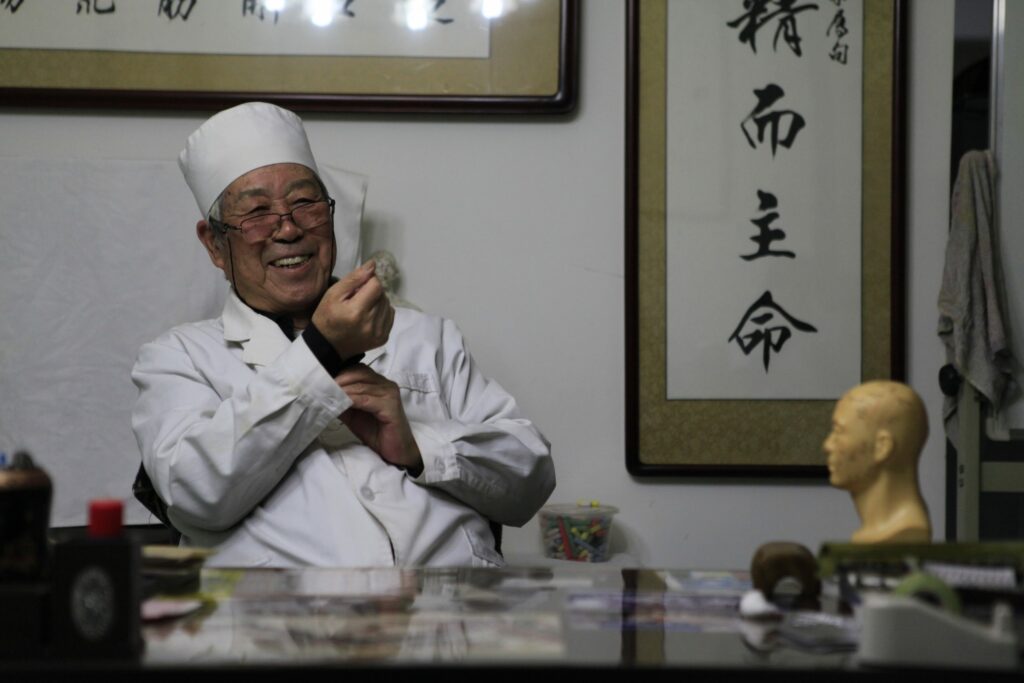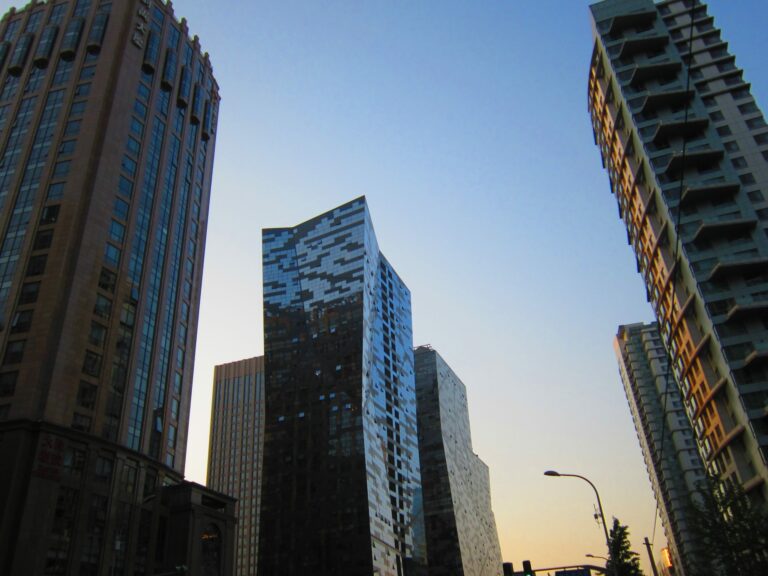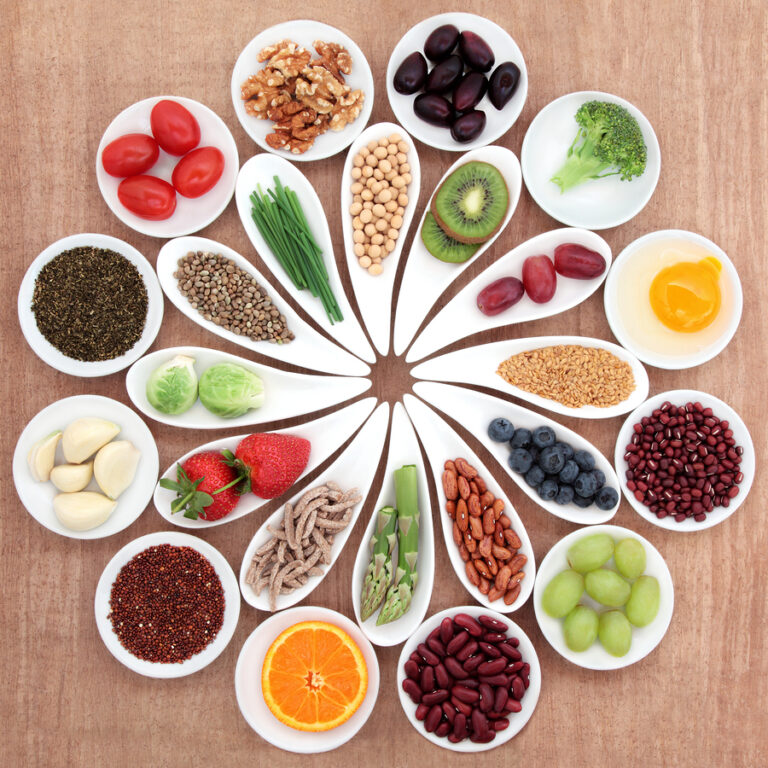The writing of this article is inspired by the late Prof. Wang Ju-Yi [王居易 1937-2017] clinical experience and thoughts about classical channel theory.
Dr. Wang has had a unique diagnostic and clinical applications regarding the application of the medical theory of acupuncture channels of Chinese medicine.
In this article, the clinical application’s differences between the the Emperor and Heart’s envoy channels will be discussed.
Introduction
When reading the indications for acupuncture points of the Hand Shao Yin channel associated with the Heart, as well as the points of the hand Jue Yin channel associated with the Pericardium, we can not help but notice the many similarities and seemingly almost identical clinical applications. Both channels are connected to and influence the Heart, they both influence the region of the chest, and they both have an effect in psycho-emotional situations. Yet, when we delve deeper into the physiology of each channel, and we have the actual clinical confirmation based on the diagnostic method of channel palpation, we find that each one of these two channels has in fact a very different and unique clinical application. This differentiation leads to substantially improved clinical results. This article will focus on the clinical application of these two channels, as well as on the importance of the channel palpation technique as understood by Dr. Wang Ju-Yi.
From The Classic Texts
In chapter 71 of the Spiritual Pivot (Huand Di Nei Jing Ling Shu), the emperor asks Qi Bo the following:
“The hand minor yin vessel, it is the only one that has no transport openings. Why?”
Qi Bo answers thus:
“The minor yin conduit is the heart vessel. The heart is the big ruler among the five long-term depots (Zang) and six short-term repositories (Fu). It is the place where the essence–spirit(Jing-Shen) resides. As long as this long-term depot is firm and stable, evil qi will not be accepted there.
When they are accepted there, then the heart is damaged.
When the heart is damaged, then the spirit will leave it.
When the spirit has left it, then that person will die.
The fact is:
All evil qi that are present in the heart, they all are present in the heart enclosure.
The heart enclosure, it is the vessel of the heart ruler. Hence the hand minor yin vessel is the only one without transport opening.”
In the historical period during which the Spiritual Pivot was written, the indications for the Hand Shao Yin and the Hand Jue Yin were one and the same. In addition, in the classical texts there are many references to five Zang and six Fu organs which in fact do not include the Heart channel. The Heart is considered the emperor, and as such, in China of those times, the philosophical and cultural ideology was that it is the role of others to protect the emperor form all danger and harm. It is only in a later period that we find mentions of using points on the Heart channel. This understanding gives rise to two important questions: Is not the Heart channel able to treat diseases connected to the channel and the organ itself? Are there any differences in the indications regarding to the use of points of the Heart channel as opposed to those of the Pericardium channel?
Channel Palpation

In the course of studying with Dr. Wang, during his lectures he would recount many stories, as befitting any good Chinese teacher. The stories were the product of a lifetime of experience as a doctor. In one of his many stories, Dr. Wang recounts a special case in the beginning of his career, one which left a lasting impression in his memory. Such cases as this one, in conjunction with his research of the classical texts, lead him to a unique clinical understanding and to the development of the technique of channel palpation, a method which according to him was neglected in the developmental process of Chinese medicine over the centuries. According to Dr. Wang’s understanding, the channel palpation technique was an inseparable part of the physical touch we apply when diagnosing a patient. This diagnostic method is useful mostly for acupuncturists who, as an integral part of their clinical work experience, actually touch the channels and the acupuncture points.
In the beginning of his clinical career Dr. Wang was not much in the habit of touching the different body areas of the acupuncture points. It was one female patient in the hospital that brought about a shift in his way of thinking. This patient suffered from chest pains due to unstable angina (unstable angina pectoris, also called ischemic chest pain). As it was a condition of the heart, Dr. Wang thought he should treat her through the channels of the Heart and Pericardium. Dr. Wang was deliberating which points to choose out of the many points for chest pain. As he was approaching the patient to perform the needling, something in his intuition pulled him to touch and palpate her forearm. While palpating her hand, he noticed heightened muscle tone and a small yet very solid nodule on the Hand Jue Yin Pericardium channel pathway and at PC4, the Xi-Cleft point of the channel. Dr. Wang decided to acupuncture only this point. Immediately after inserting the needle, the patient reported a strong radiating sensation that began at the forearm and moved towards the chest. After approximately one minute from the moment of needling the chest pains disappeared. Both the patient and Dr. Wang were equally surprised and excited.
In the Spiritual Pivot, chapter 75, it is hinted at that the palpation of specific areas in the body is an inseparable part of the diagnostic process, and that this technique is itself an integral part of diagnosing using the medium of palpation.
“When using the needles it is imperative to first examine whether in the conduits and network [vessels] there is a condition of repletion or depletion. One presses the finger [切qiè] [into the vessels] and follows [循 xún] their course. Once squeezes [按 àn] [the skin] and pulls it up [弹 tàn]. One checks which movements correspond, and then removes [the evil qi] by moving them downward.”
For the main part of the last few centuries, this reference to touch in the text was mostly inferred to be exclusive to palpation of the radial pulse.
Dr. Wang’s unique grasp of the structural space in which the channels are situated comes not only from the classic texts, in which according to him there was a very precise knowledge of body anatomy, but also from a modern understanding of body structures and spaces. In accordance with Dr. Wang’s understanding, each channel in the body has its own pathway, as well as a structure and a physical expression in the body. This place in the body, the crevice, is called in Chinese 閒隙 [Jiànxì]. In this space, between the anatomical structures of the five tissues, the channels run their course. In accordance with the ancient concepts of Chinese medicine, as well as from the Yellow Emperor’s Canon of Internal Medicine (Huang Di Nei Jing), we know about the existence of the five bodily tissues – skin, muscles, blood vessels, bones, tendons and ligaments. Yet, with the modern understanding of the anatomy of the human body, we know about a different and wider classification of body tissues. One of the tissues that interests acupuncturists the most, among them was also Dr. Wang himself, is the connective tissue.
All the five types of bodily tissues mentioned above are wrapped in connective tissue. This connective tissue creates the two banks of the channel (like the banks of a river). Inside the connective tissue is situated the intercellular fluid. Dr. Wang believed that the flow which occurs between the banks of the connective tissue is what the ancient doctors allured to that flows in the channels, and it is this flow that has an effect on the physiology and the pathology of the channel system. Dr. Wang further stipulated that the different nodules and knots which can be objectively palpated with the channel palpation method are a result of crystallization of the intercellular fluid due to a decrease or an increase in this flow. The channels are connected to each of the organs which they are specifically associated with, and in this manner they influence the regulation and organization of Qi flow in the channel as well as in the pertaining organ. A decrease or increase in the flow of intercellular fluid is very similar to the Chinese concept of Qi transformation 氣化 [qì huà], which is in fact the Qi transformation process which occurs in every channel. This Qi transformation process occurs through the five transport points 五輸穴 [wǔ shū xué], which explains why these points, and the area between the fingers/toes and elbow/knee, are so important in diagnosis as well as in treatment. Therefore, in order to understand which channel is not functioning properly, it is the area situated between the Well points and the Sea points that is the most crucial to focus on when we touch and palpate. This is the area along the channel where most of the transformation process is happening.
It is essential to know and understand that through clinical results and extensive clinical experience, Dr. Wang succeeded in proving these theories. Throughout his entire life, Dr. Wang ceaselessly researched this subject, and he always encouraged his students to continue learning and researching on their own. As Dr. Wang always said – “There is much work to be done, and we must continue to investigate in order for the channel system theory to continue evolving.”
Channel Physiology

The Shao Yin channel is comprised of the hand shao yin heart and the foot shao yin kidneys. In chapter 24 of the Su Wen it is said of this system that it is has more Qi and less Blood. The Shao Yin system is the pivot between the opening outside (Tai Yin) and the uniting inside (Jue Yin). The pivot of Shao Yin is the main movement pivot in the yin systems. This pivot moves with the assistance of the Heart pulse and the stimulus force from the gate of life (Ming Men) originate from the kidney. The Shao Yin system is the source of metabolic heat of the body. As far as the six external Qi (environmental /climatic factors) are concerned, this system is linked to heat. While the Zang organs of this system, the Heart and Kidneys, are in charge of maintaining and generating metabolic heat in the body, the channels are the ones regulating fire in the body. In the Shao Yin system the channels and the organs regulate each others functions.
The Jue Yin channel is comprised of the hand Jue Yin Pericardium and the foot Jue Yin Liver. In chapter 24 of the Su Wen it is said about this system that it is has more Blood and less Qi. The Jue Yin system is the last segment of the yin cycle, the terminal yin. This is the terminating and innermost place in the body, the place of reverting inwards for the purpose of storage and renewal. The Jue Yin is strongly associated with Blood. In relation to the six external Qi (environmental/climatic factors) the system is associated with wind. The chaotic movement generated by wind is regulated and balanced by the relaxing quality and fullness of Blood, which are associated with the Jue Yin. The Liver stores the Blood and releases it according to necessity. It does this through its function of allowing free flow in the body to exist. The Pericardium calms the Shen/spirit when emotions cause Qi to stagnate. The Pericardium also protects the Heart through its function of cooling Blood and yin. The Heart tends to suffer from heat – excess yang. The Pericardium, through its relationship to Blood, cools and calms the Heart – yin.
Common Heart Disorders
The heart organ tends to suffer from three main issues:
- The first – a disorder related to impeded blood supply to the cardiac muscle – Myocardial Ischemia. The symptoms are discomfort and pain in the chest region, a condition termed angina, or angina pectoris. This condition is a result of decreased blood supply, which leads to a decrease in oxygen supply to the cardiac muscle. This condition is medically dangerous as it can lead to myocardial infarction.
- The second – a disorder mainly connected to the electric conduction system of the heart. For the heart to perform its function of supplying blood to all parts of the body, it must contract and release in a constant and timed manner. For this purpose the heart has an electric conductivity system which times the heart’s contractions and relays the electrical impulses to the cardiac muscle fibers. This system is made up of pacemakers and electric conduction fibers. The symptoms for this disorder would be tachycardia or bradycardia, and arrhythmia. This condition can be a result of various heart diseases, some of them being cardiac muscle disease, rheumatic heart disease, heart valve disorders or myocarditis.
- The third – a disorder mainly connected to valve heart disease of one of four heart valves. These diseases, usually congenital or acquired, may involve one or more heart valves.
Clinical Application of the Heart and Pericardium Channels
As mentioned before, according to the medical theory of channel system, the Hand Jue Yin channel is strongly associated to Blood, and it is due to this that it is applied in the treatment of blood supply issues. Yet, when we are dealing with cardic rhythm irregularities due to electric conductivity problems or heart valve diseases, in terms of channels these issues would be related more to the Hand Shao Yin channel, it being the pivot and connected more to Qi than to Blood. It is important to comprehend that Dr. Wang reached these conclusions by integrating western anatomy and pathophysiology of the heart with an in-depth understanding of the channel theory, together with confirmation through palpation of the channels and abundant clinical experience.
Insufficient blood supply to the heart is related to the epicardium. The epicardium is where the coronary arteries and veins traverse. Vascular flow is very much connected to this area. The epicardium is the outermost of three membrane layers – the epicardium, the myocardium and the endocardium. The pericardium is wrapped around the heart and is physically ‘closest’ to the epicardium. In channel theory, the Hand Jue Yin is connected to blood circulation in this area.
According to Dr. Wang’s knowledge, understanding and clinical experience, palpation of the channels is the most effective diagnostic tool to differentiate which channel is not functioning properly. The moment we understand which channel is dysfunctional, we can choose appropriate acupuncture points for treatment. In situations where there is improper blood supply to the cardiac muscle, we can find evidence of this along the Jue Yin channel, which runs along the forearm. These findings reinforces this clinical theory.
In general, the following are the findings to be felt while palpating along the channel pathways in conditions associated with the heart organ:
- Lump – 結塊 [Jié kuài] – usually found in the area of PC4 if there is a problem with the cardiac muscle. It can be between the size of a soy bean and a kidney bean. This is quite a large finding.
- Nodule – 結節 [Jié jié] – usually found in the area of Ht4, Ht6, if there is a problem of palpitations, emotional issues, sleep disorders, and problems due to disorders of the electric conduction system of the heart. This finding is usually smaller than the first.
- Crispy Nodule – 脆絡 [Cuì luò] – usually found in the area of the palm of the hand, where the skin is superficial. Mostly findings will be in the area of Ht7 when there are palpitations due to arrhythmia and problems due to disorders of the electric conduction system of the heart. This finding is very small and disappears when the skin is pressed firmly. It feels like sand or broken glass, therefore it’s name, crispy.
- Hardness and heightened muscle tone – often we will discern hardness and excess muscle tone in the middle area of the forearm, in the area of PC4 with cardiac muscle disorders.
Clinical Case Study
A female patient, age 53, with main complaints of snoring an apnea.

She suffers from apnea and hypertension for the last six years. Her blood pressure is usually 150/100. She also suffers occasionally from attacks of vertigo. Upon palpating the channels, findings were noticed in the Foot Shao Yin, Foot Tai Yang and Hand Shao Yin. Her pulse was deep and thin, irregular and skipping a beat. In the first treatment the He-Sea points of Shao Yin, Ht3 and Kid10, were needled. In the second treatment the pulse was regular, without skipping a beat, as well as stronger. Blood pressure was 130/90. The same points were needled in this treatment.
Analysis: According to Chinese medicine theory, apnea syndrome is usually associated with problems of the Hand Tai Yin and the organ of the Lungs. Yet, when palpating the channels, findings were located on the Hand and Foot Shao Yin. In addition, the pulse diagnosis revealed an irregular pulse, which is also associated with the Heart. The Shao Yin He-Sea points assisted in regulating the proper Qi flow and in renewing the relationship between the Heart and Kidneys. After five treatments, there was a noticeable improvement in the patient’s snoring and apnea. Her blood pressure was 120/80 and the vertigo attacks did not occur anymore after the first session.
Bibliography
- Notes from lectures of Dr. Wang Ju-Yi, Beijing China 2011- 2012
- Applied Channel Theory in Chinese Medicine – Lectures On Channel Therapeutics, Wang Ju-Yi and James Robertson (East Land Press)
- Discussion on the Difference Between the Disorders Treated by the Hand Shao Yin and Hand Jue Yin, Wang Hong Min (from the First International Symposium of Wang Ju-Yi’s Applied Channel Theory)
- Navigating the Channels of Traditional Chinese Medicine, Yitian Ni (Paradigm Publications)
- The Clinical Significance of Channel Changes, Wang Ju Yi and Mei Li (The Journal Of Chinese Medicine, No. 99, June 2012)
- The Yellow Emperor’s Canon Of Internal Medicine (China Science and Technology, Chinese-English Edition)
- Note from lectures of Channel Theory course, taught by Shaun Goodman (Tel Aviv, 2012-13)
Translated from Hebrew: Oda Bogaire
Proofreading: Gil Ton



